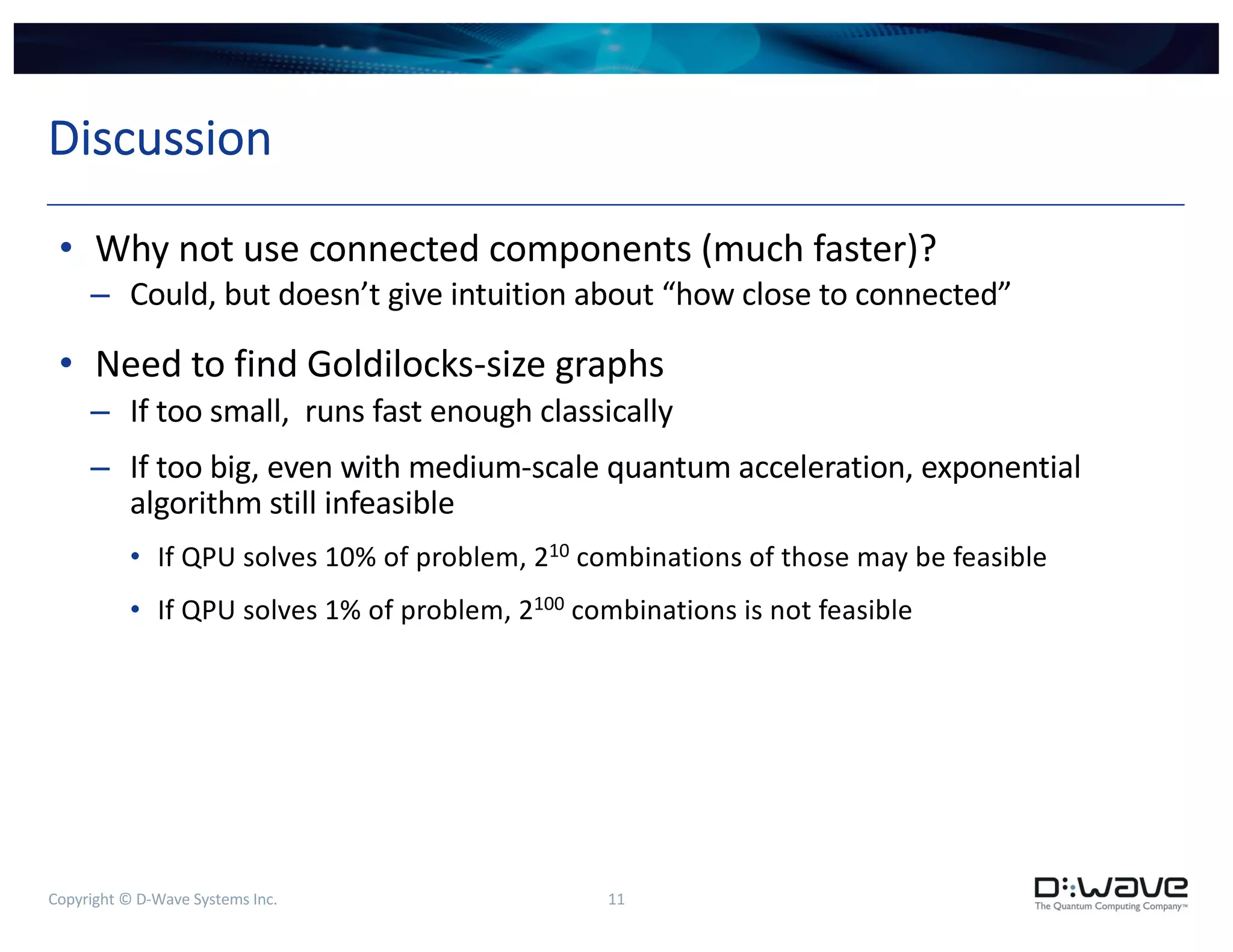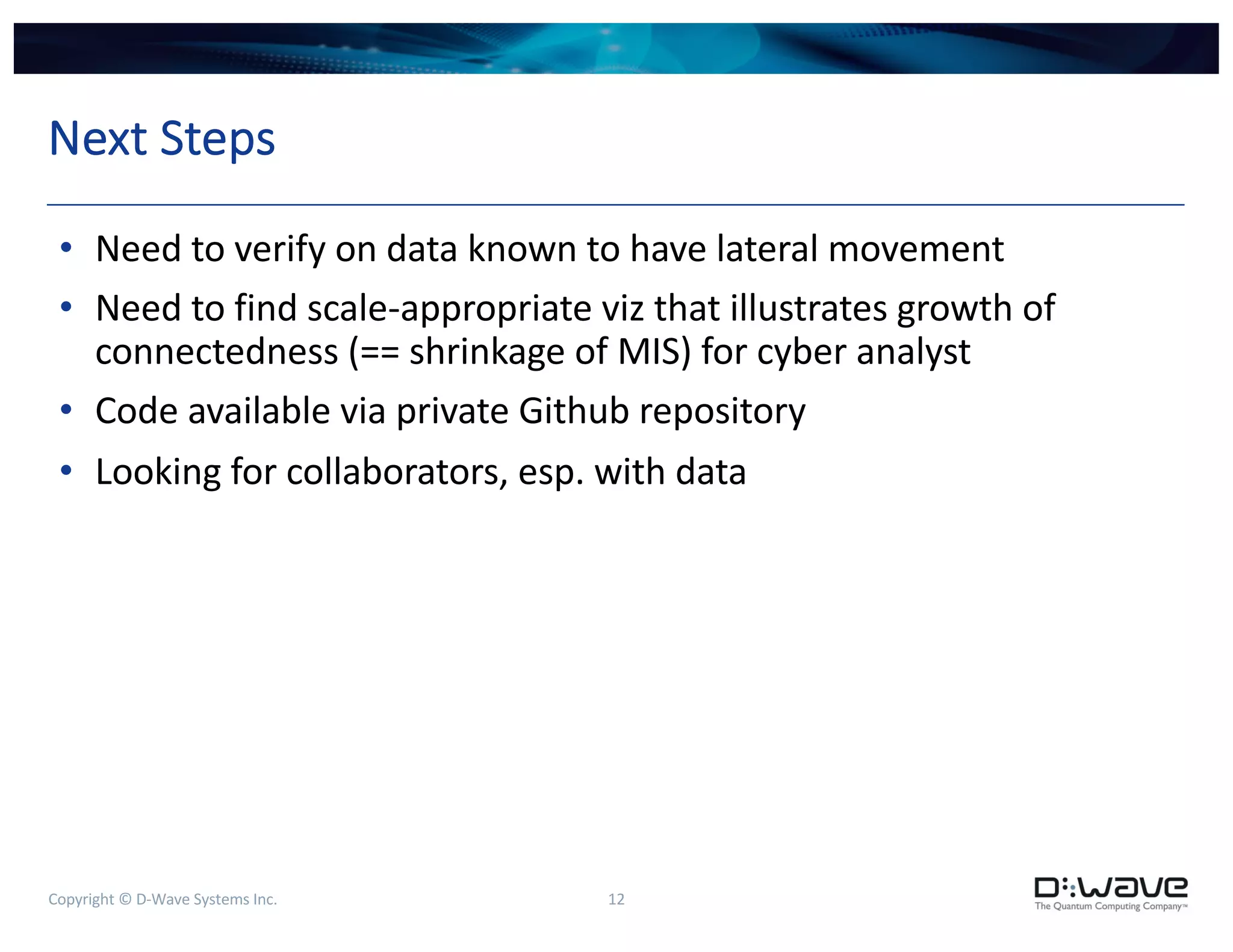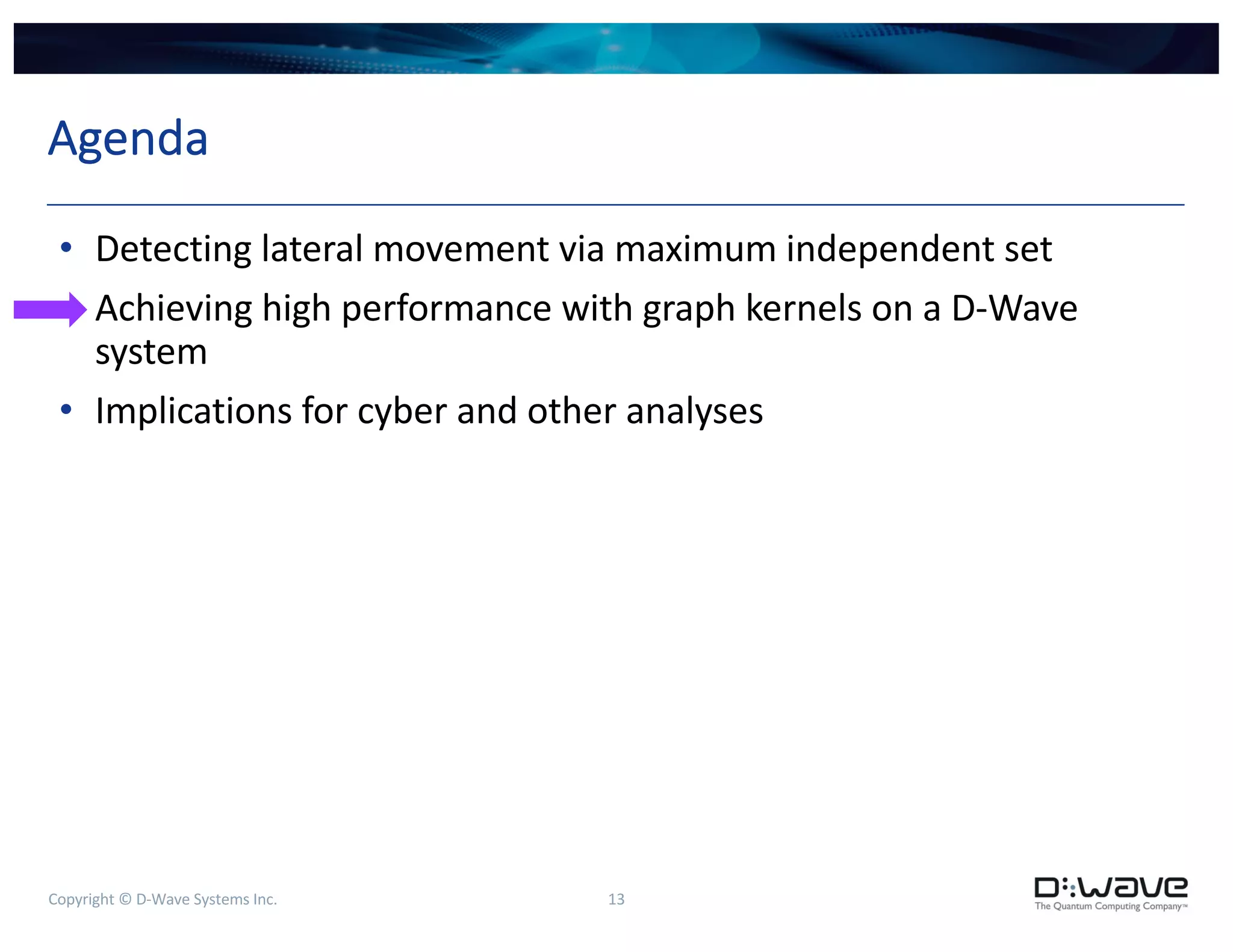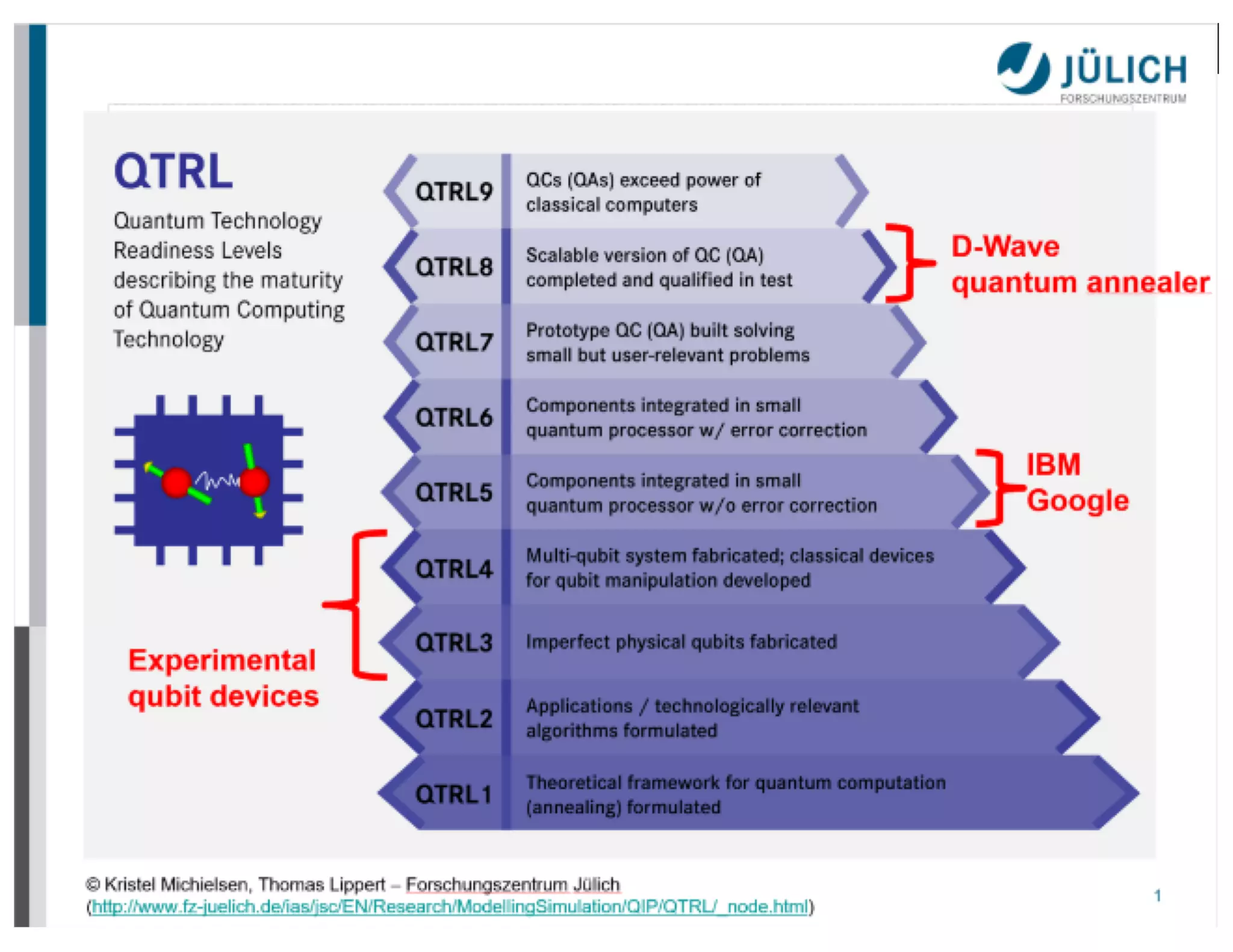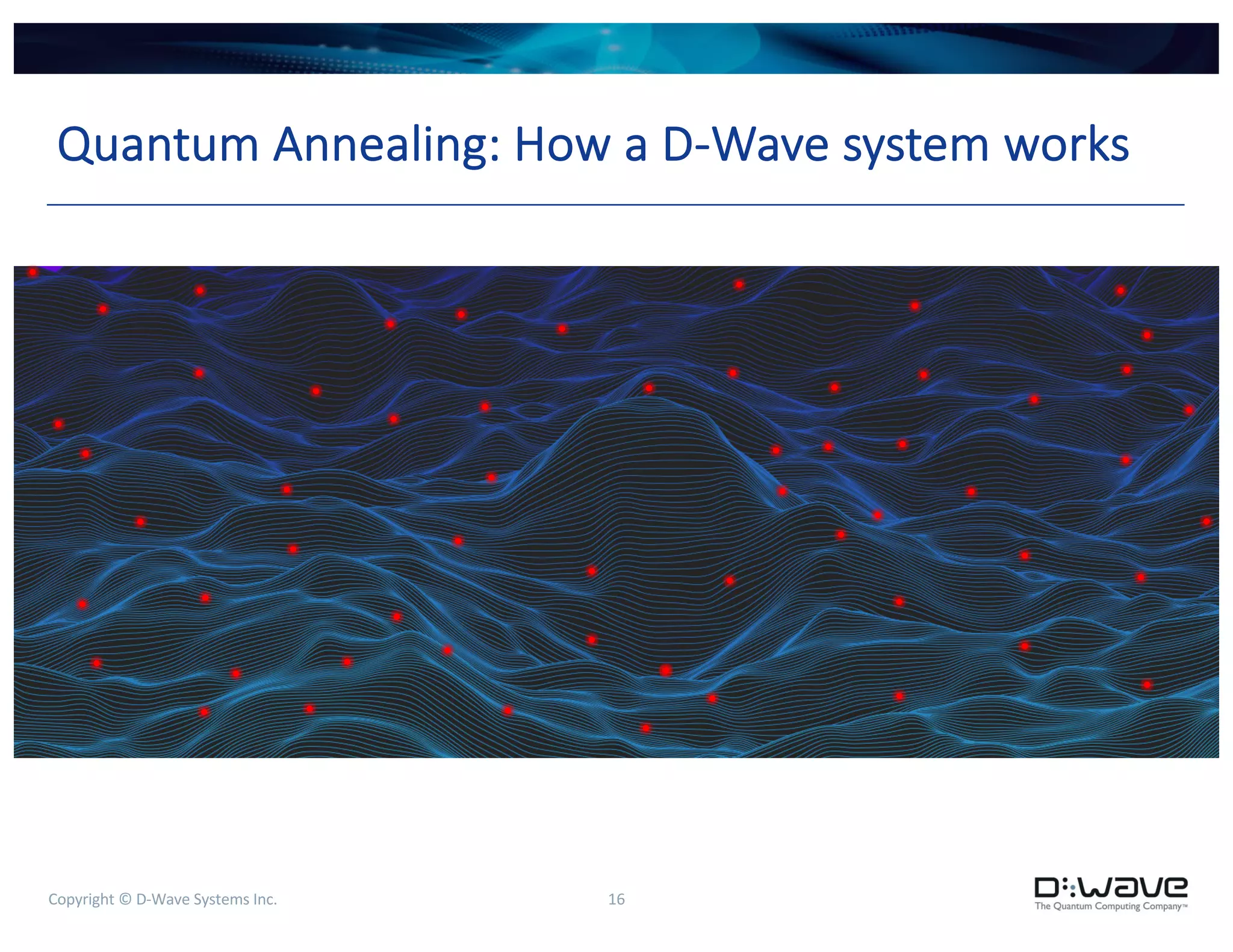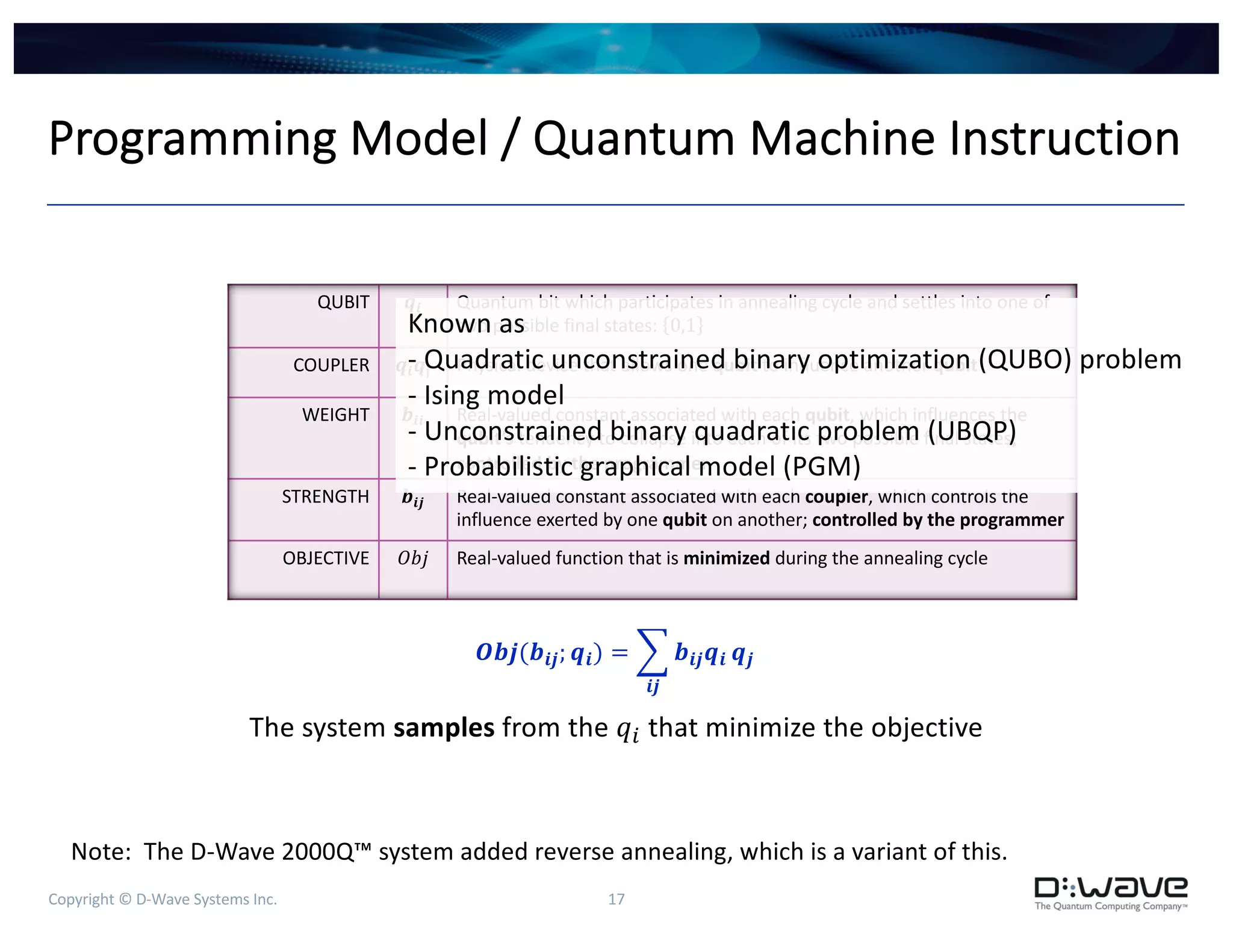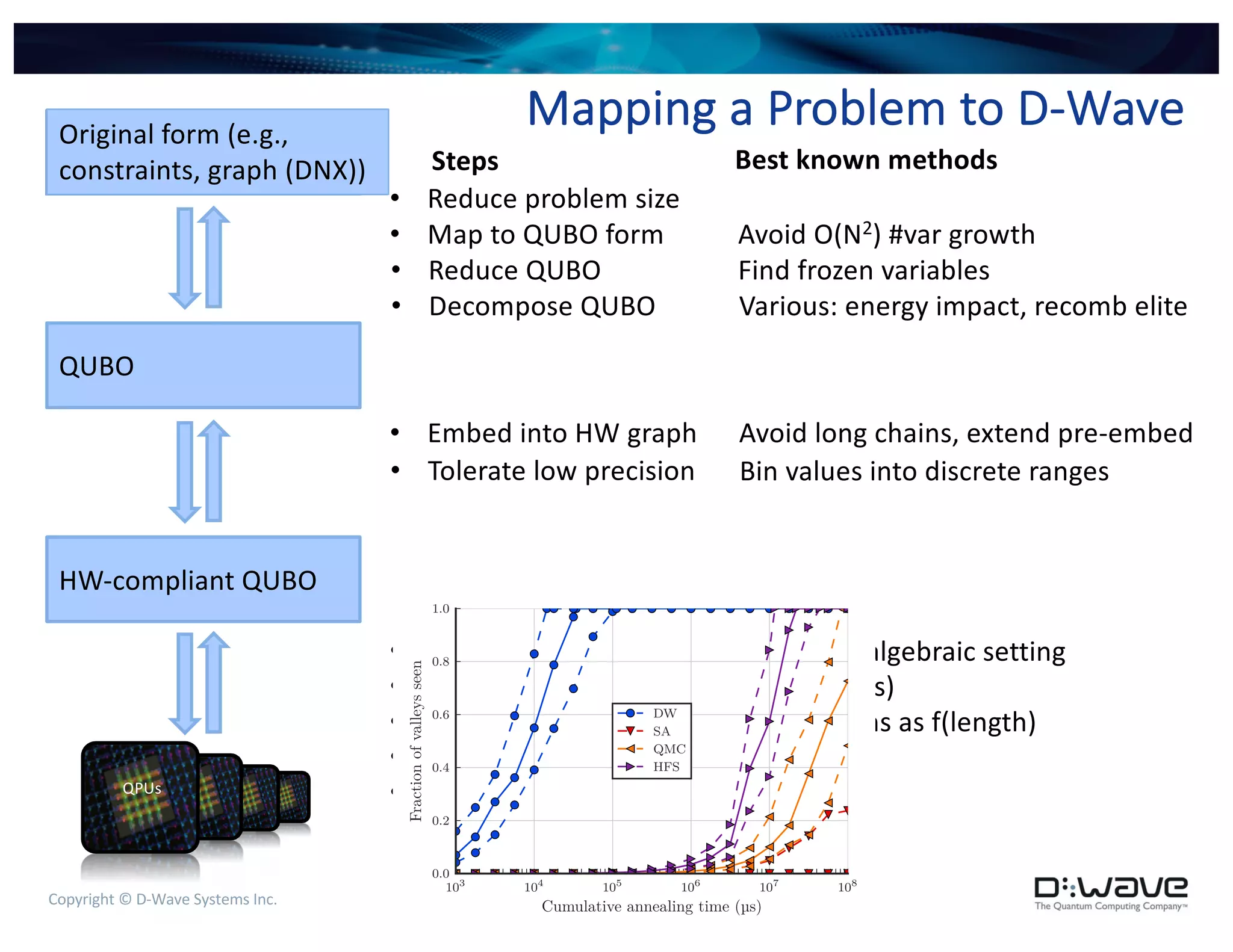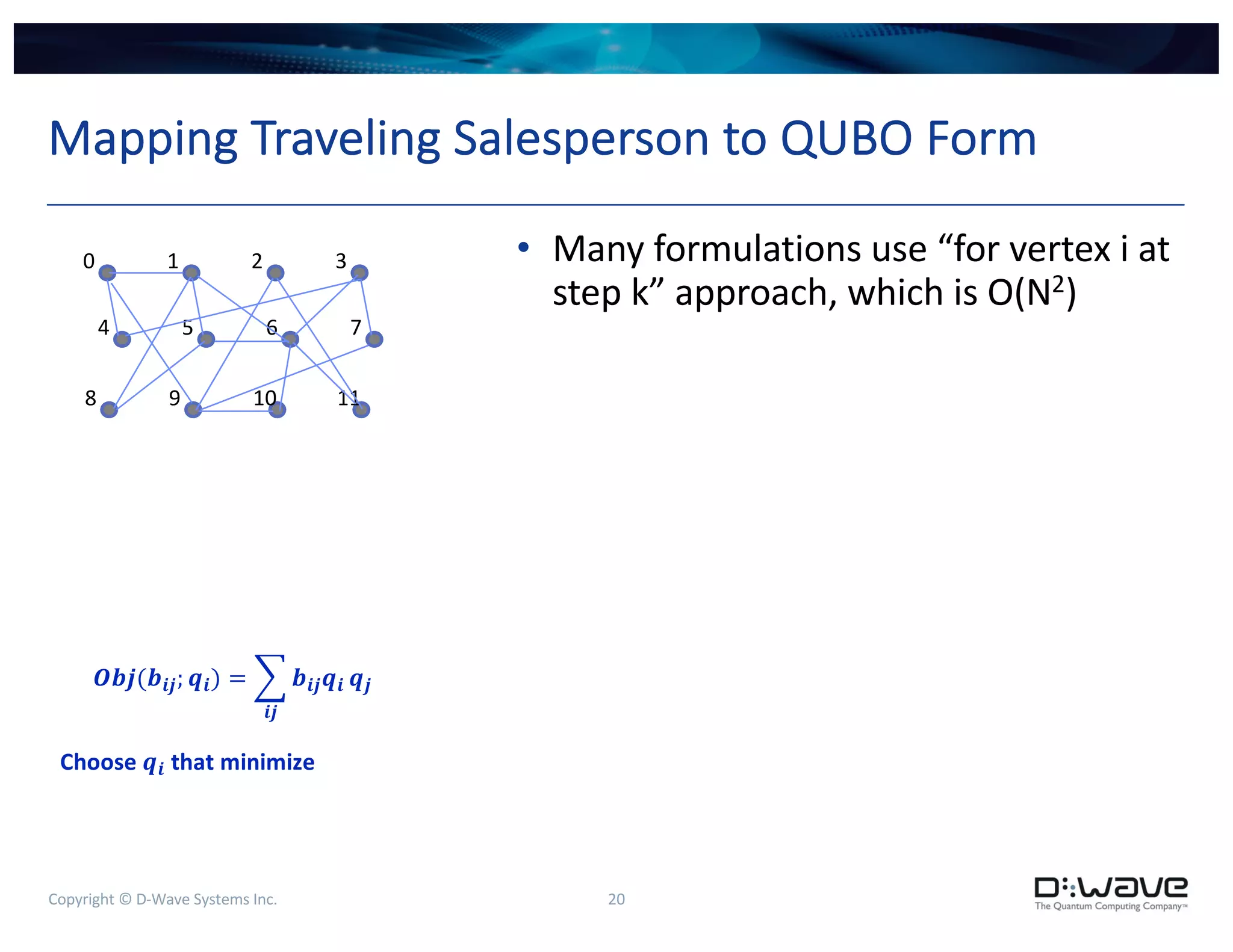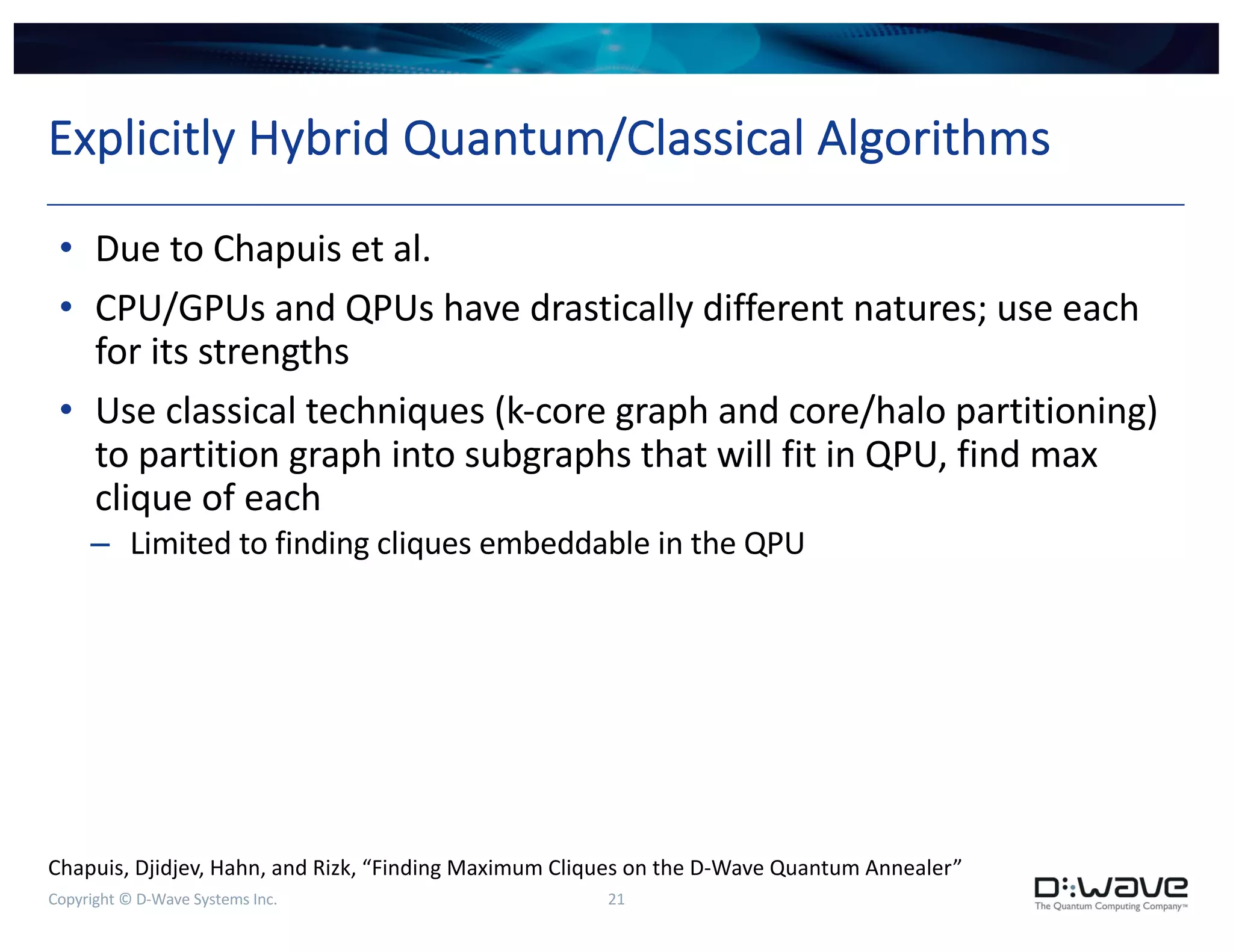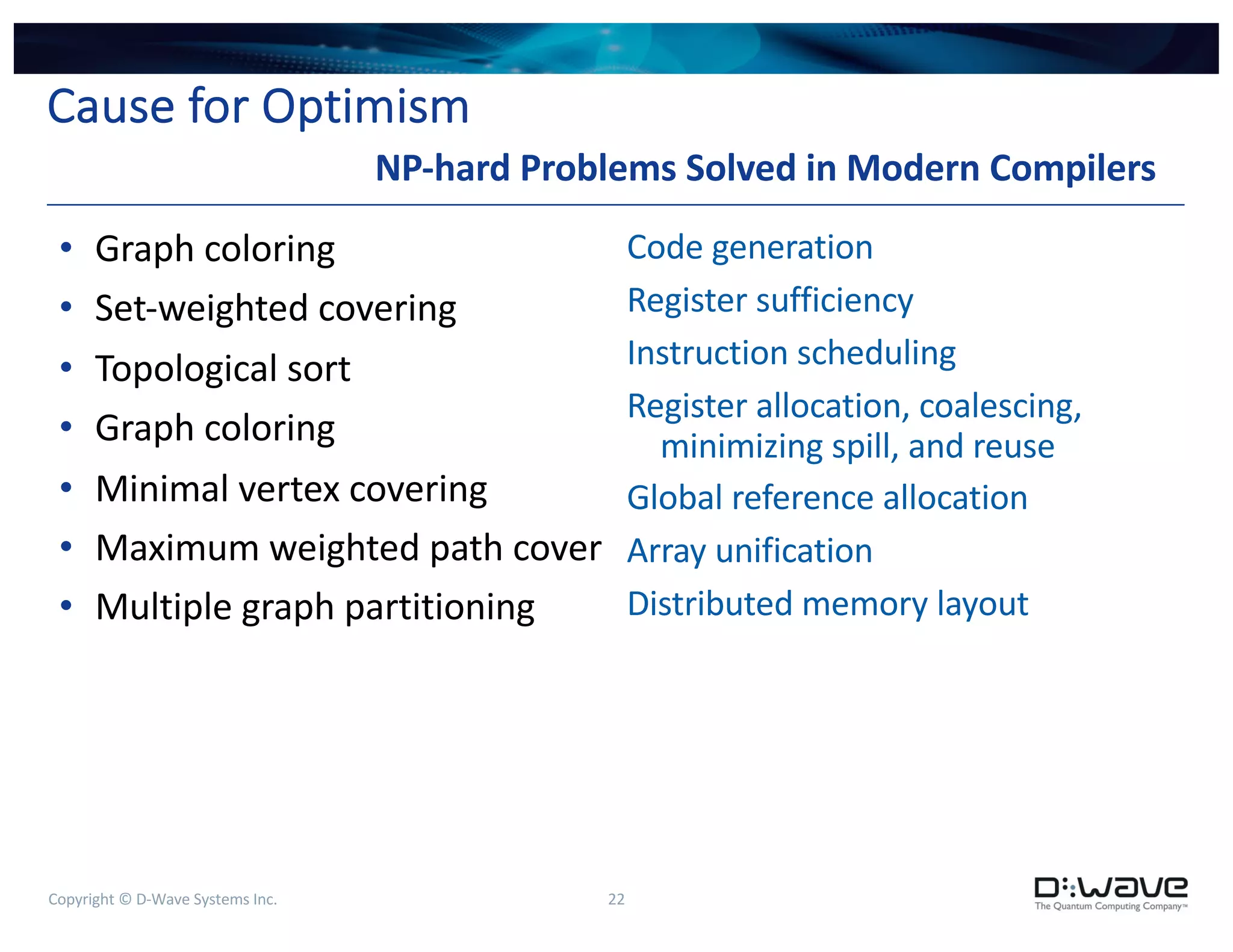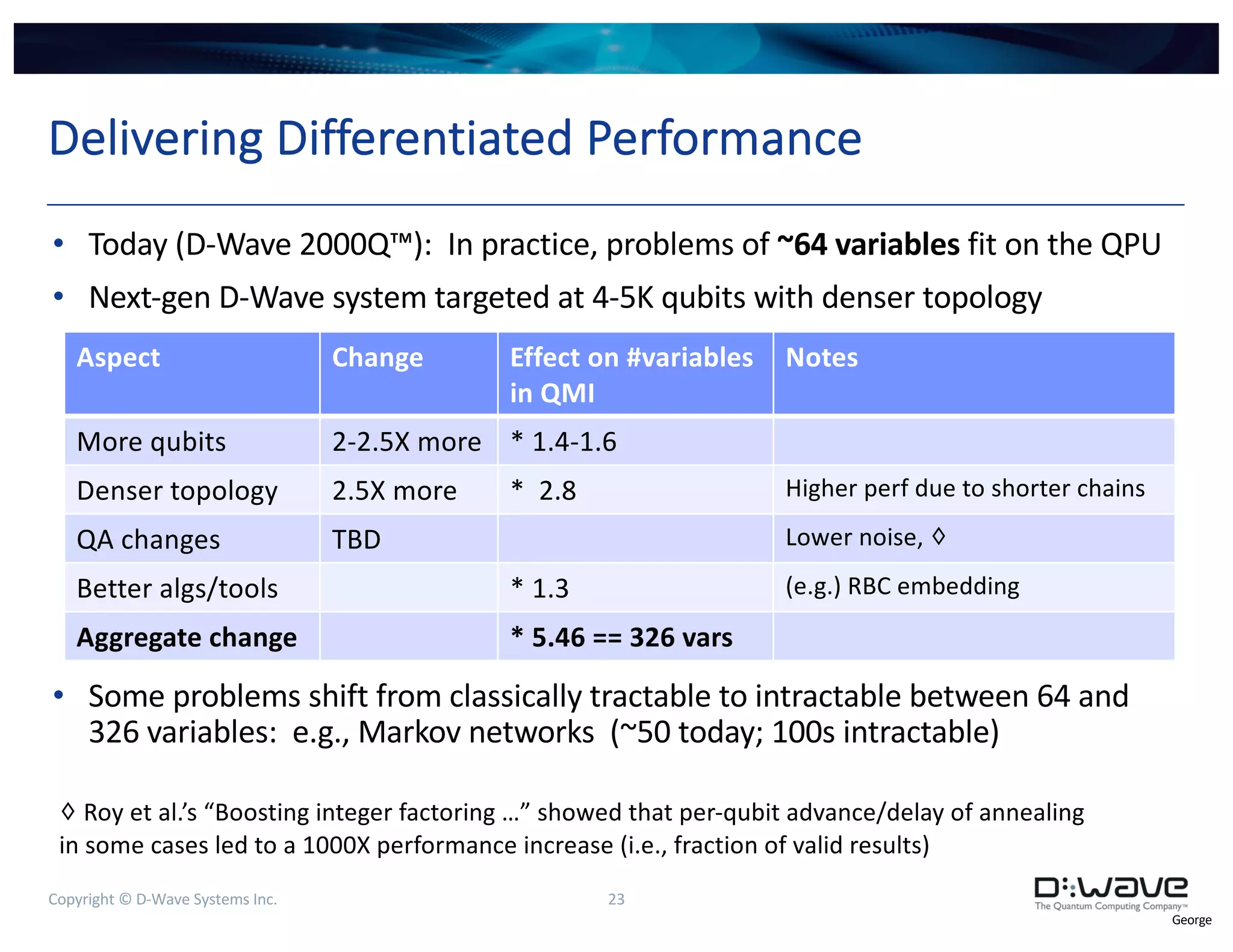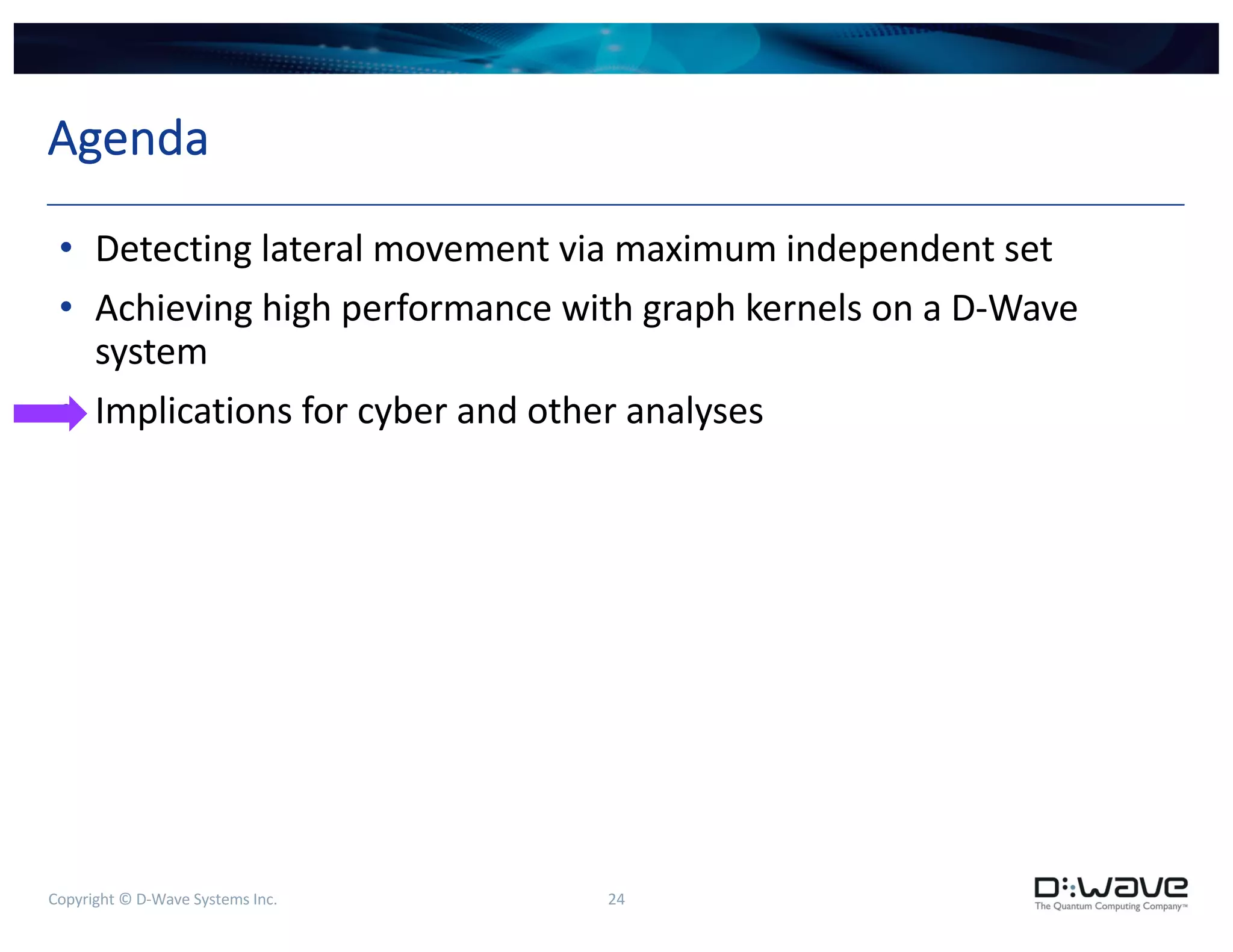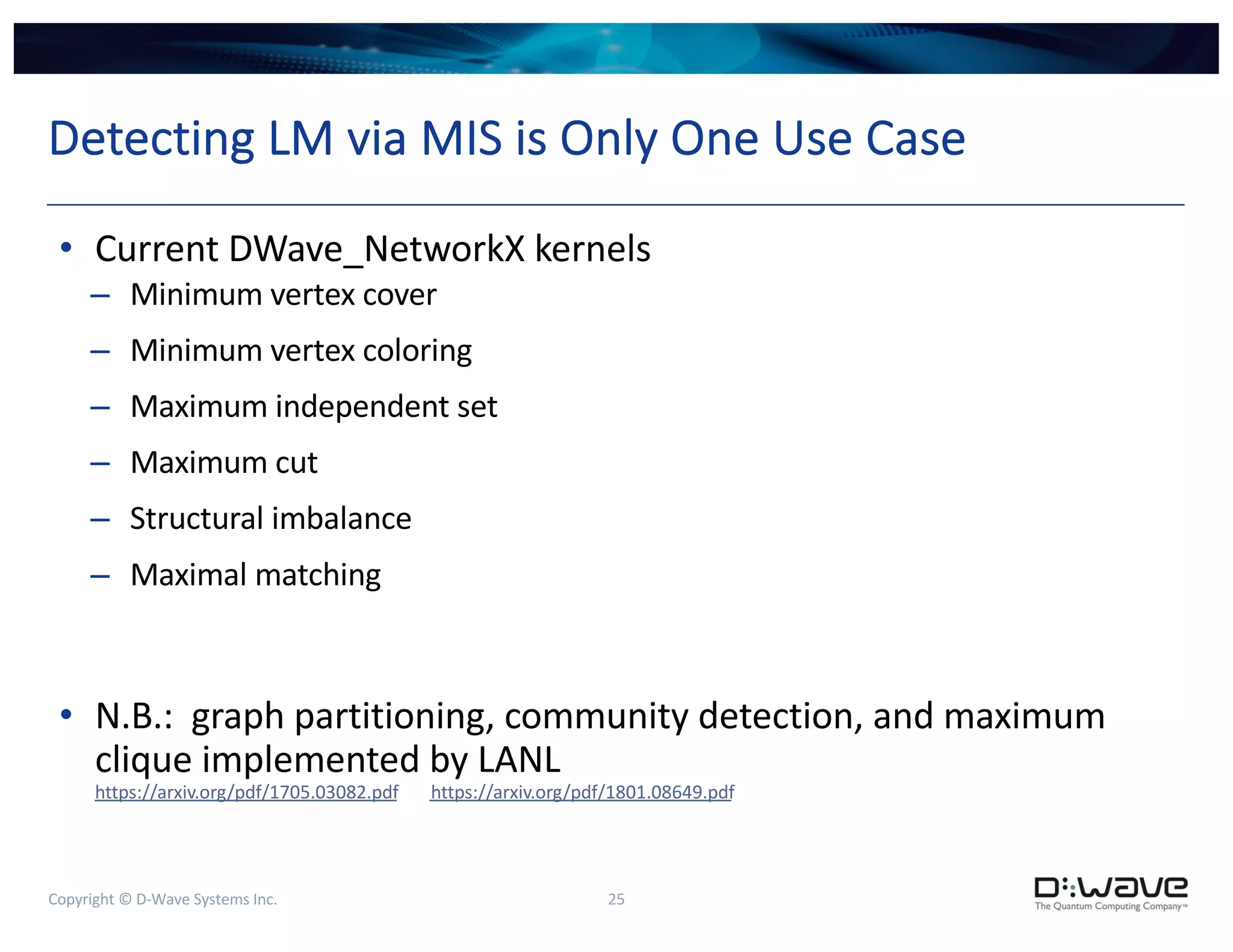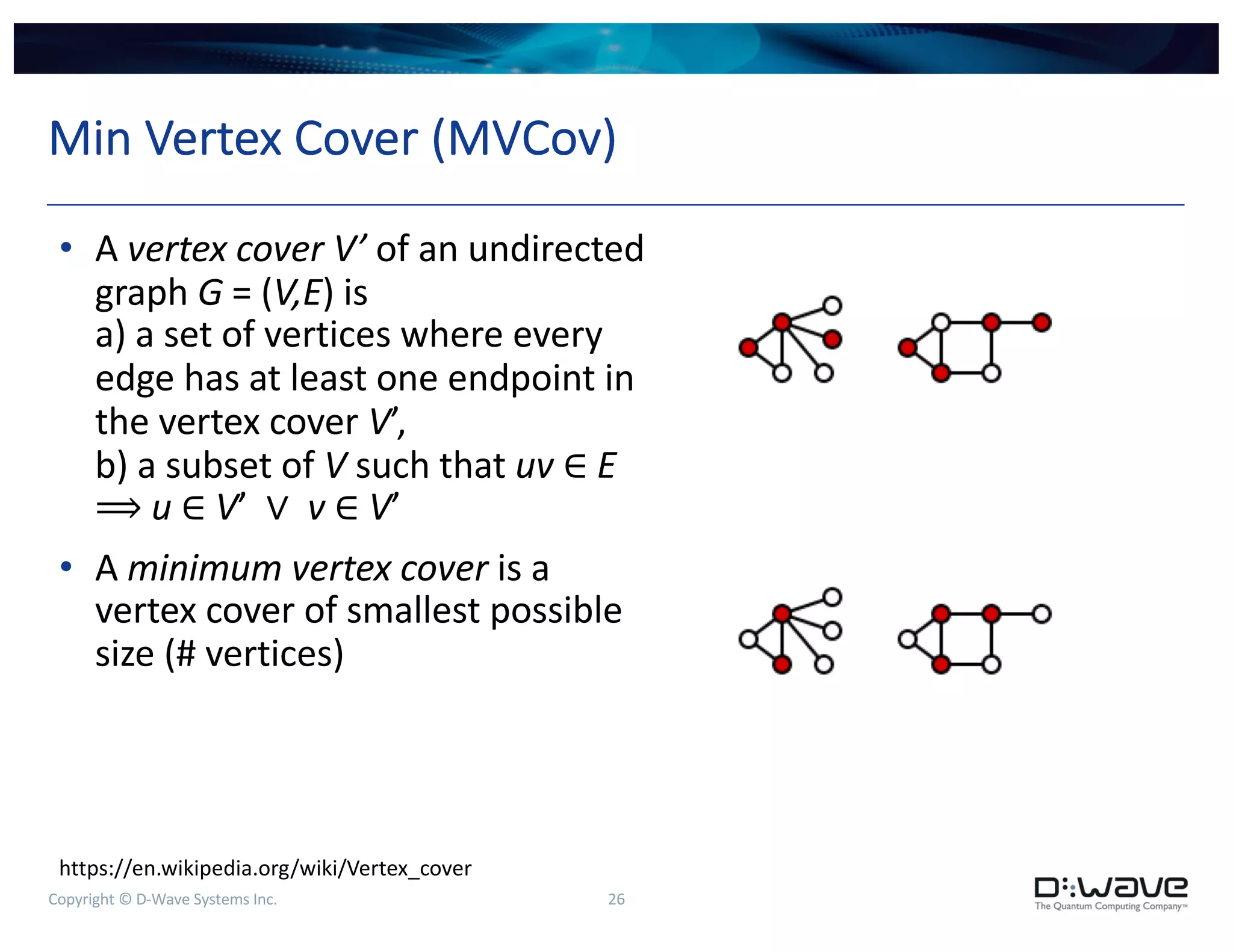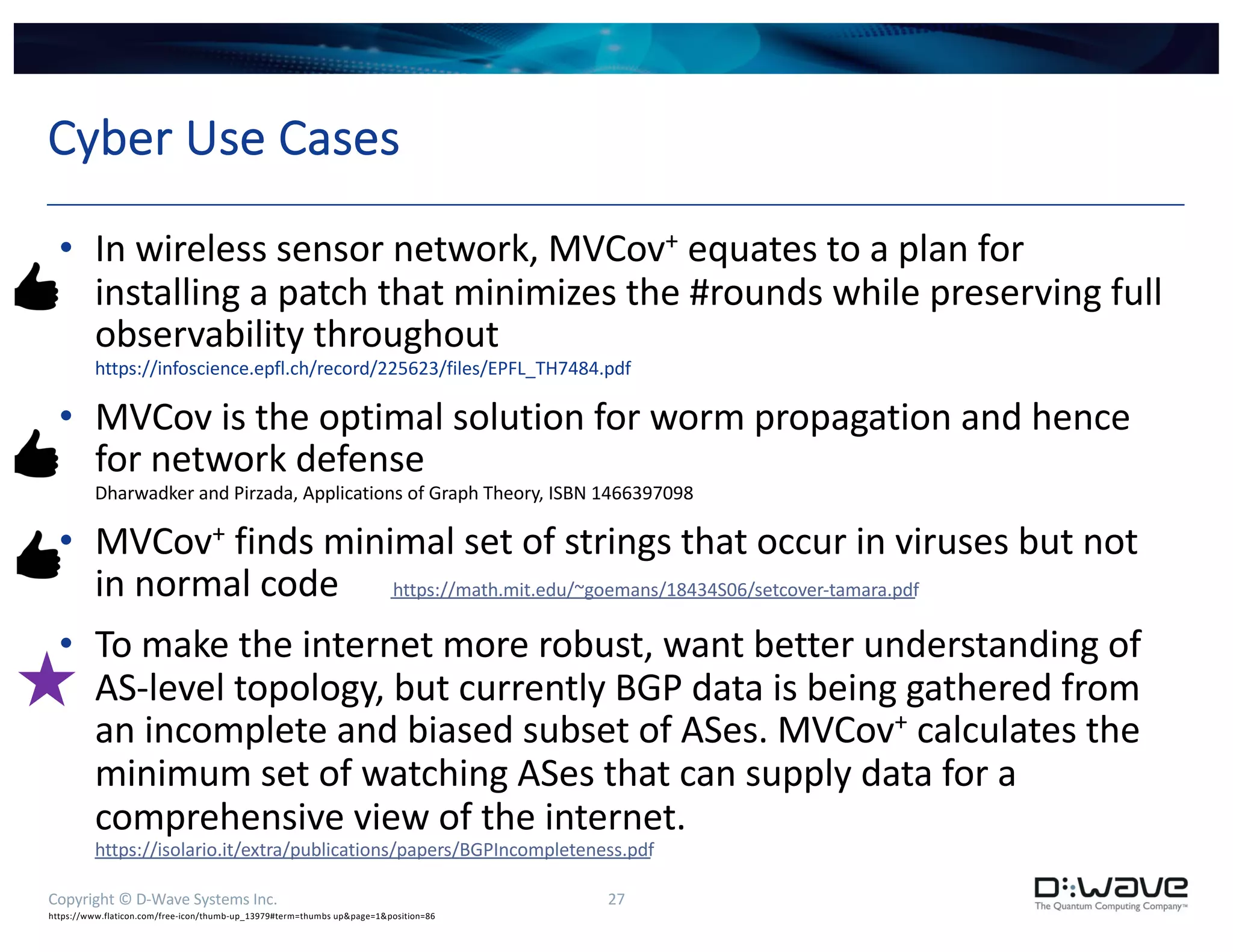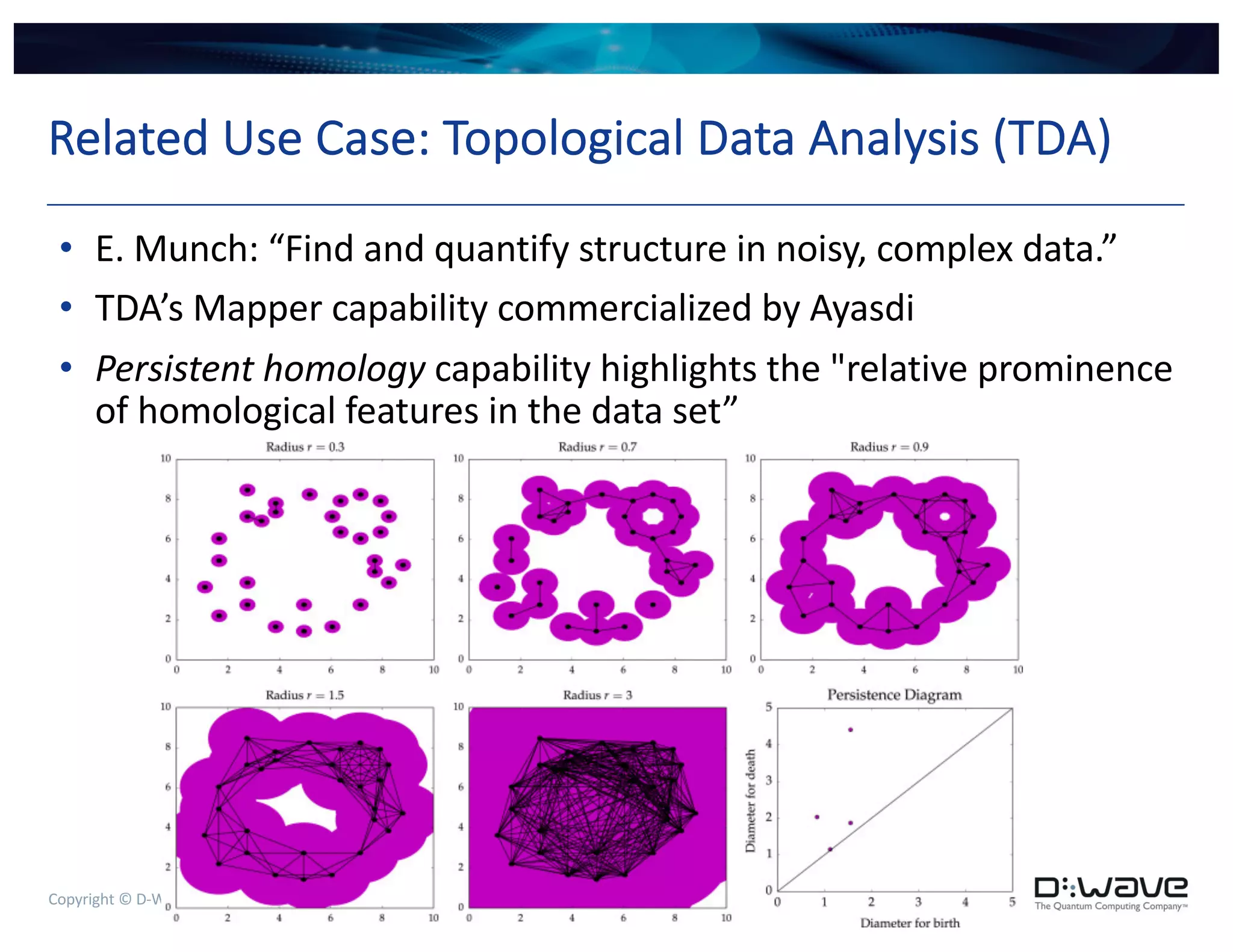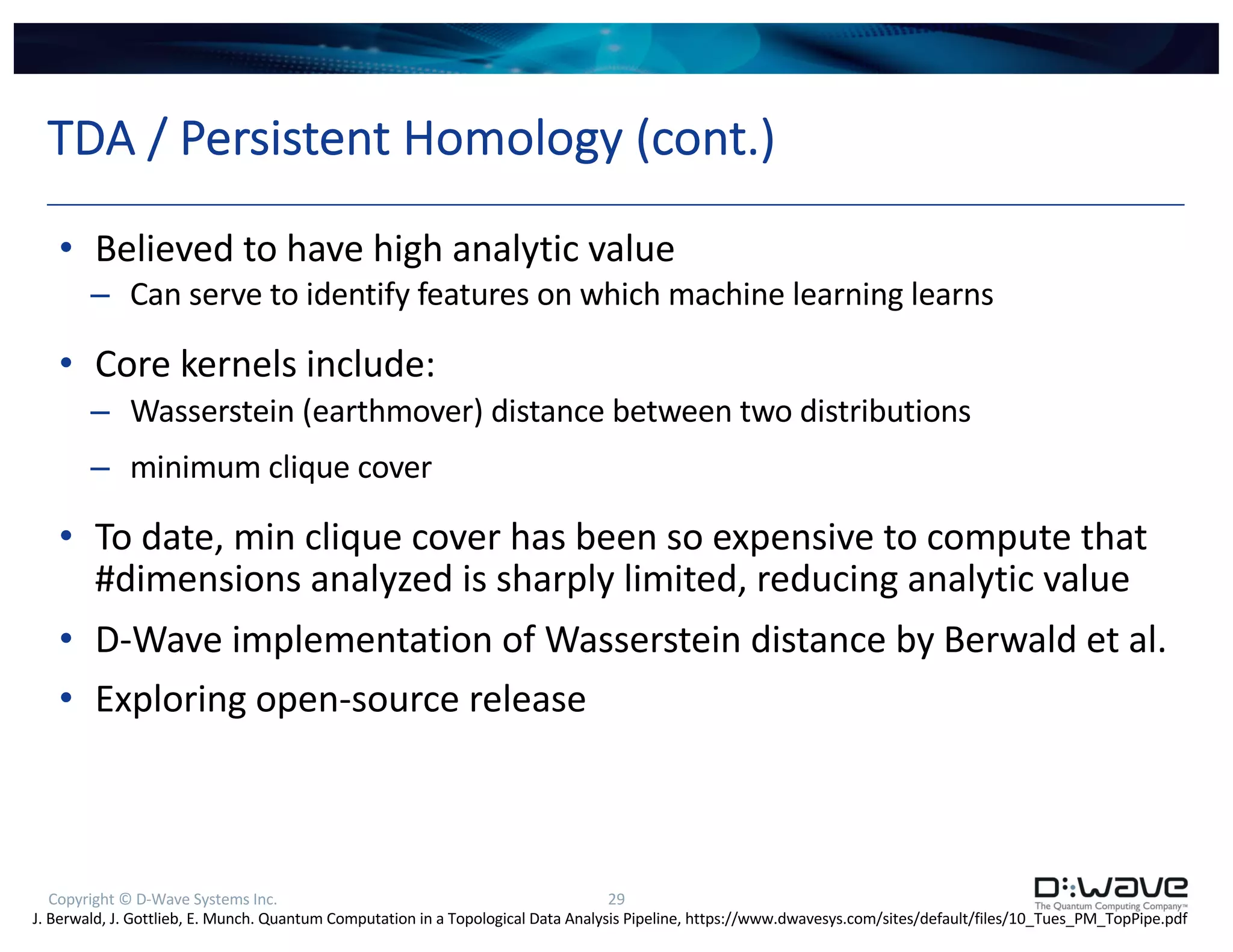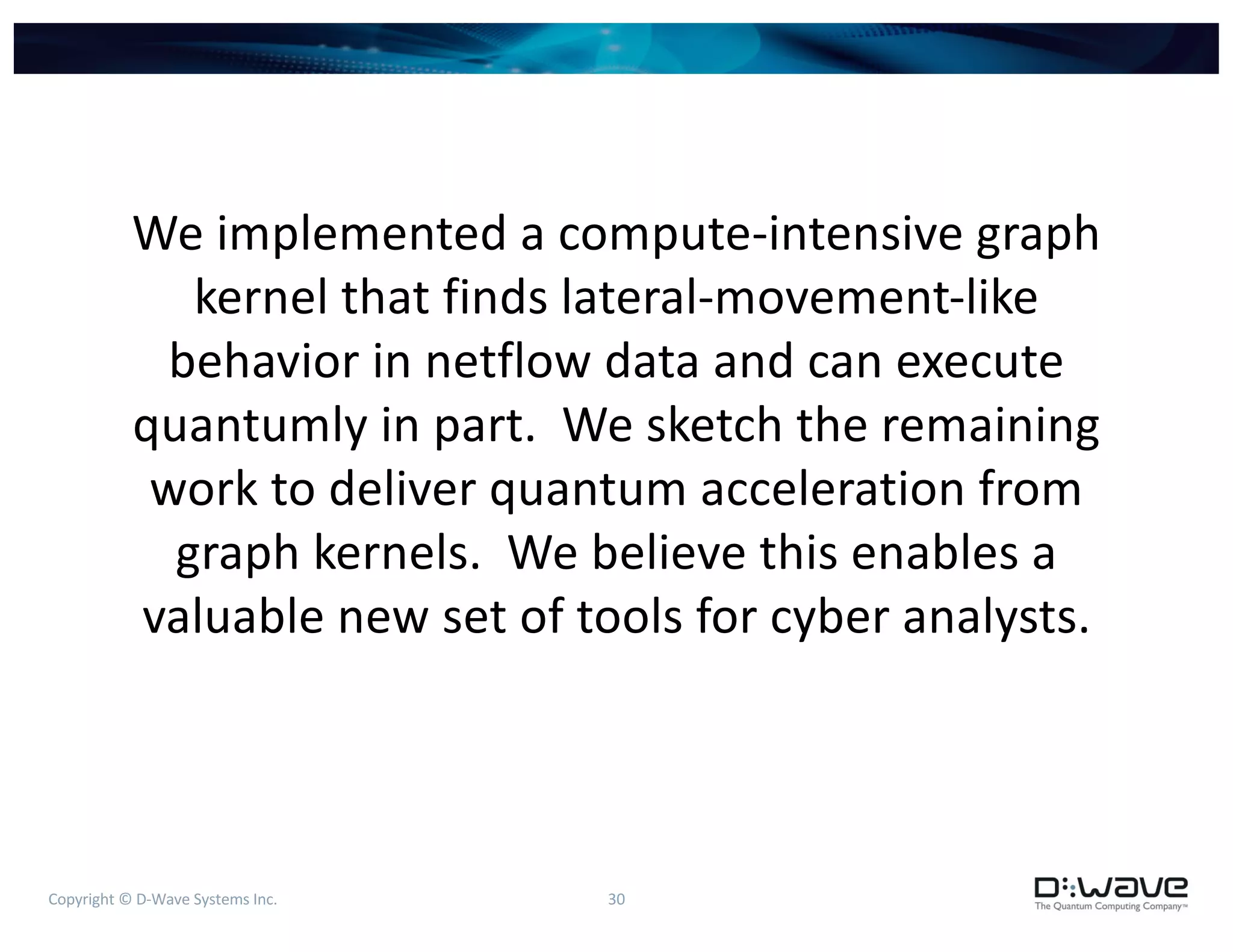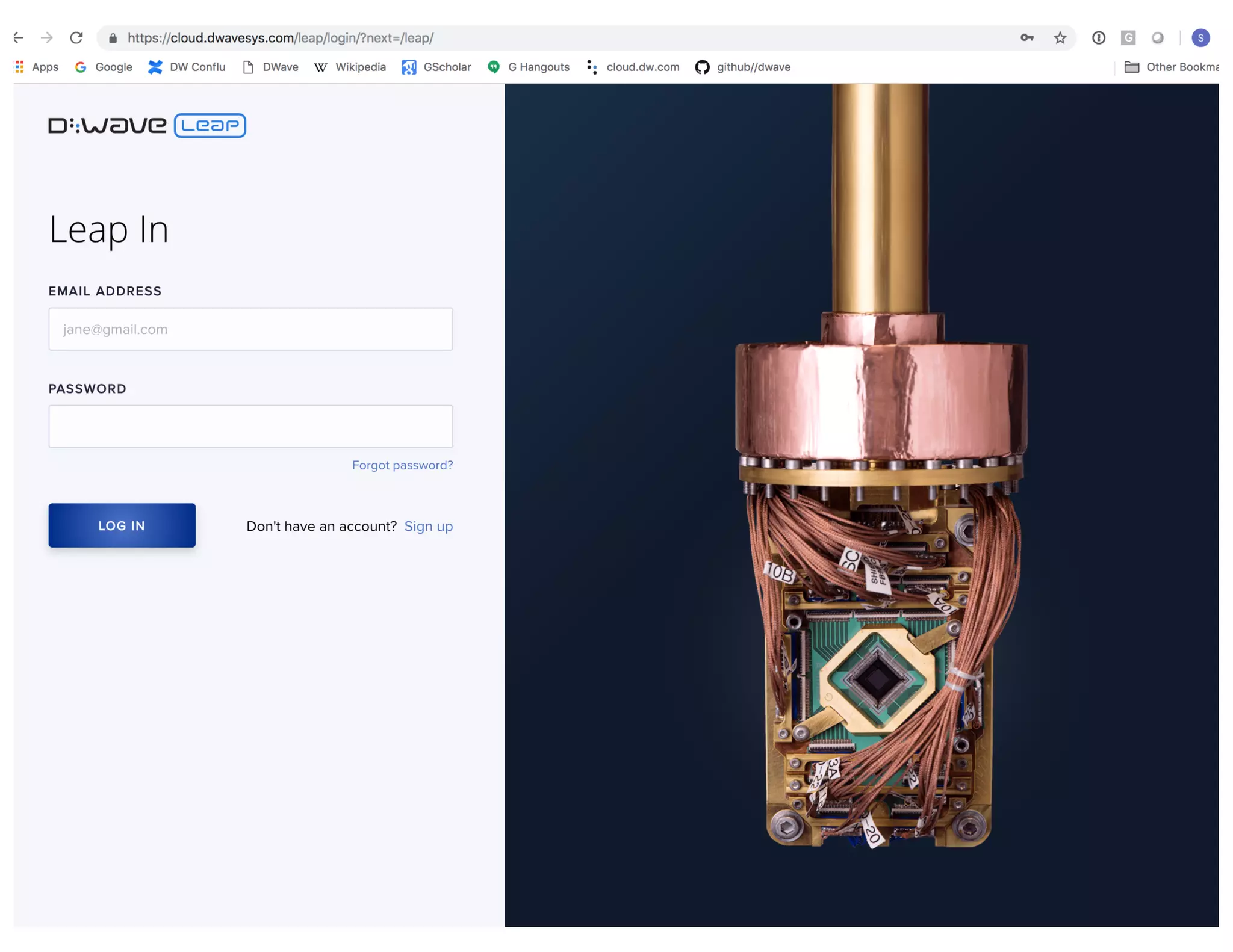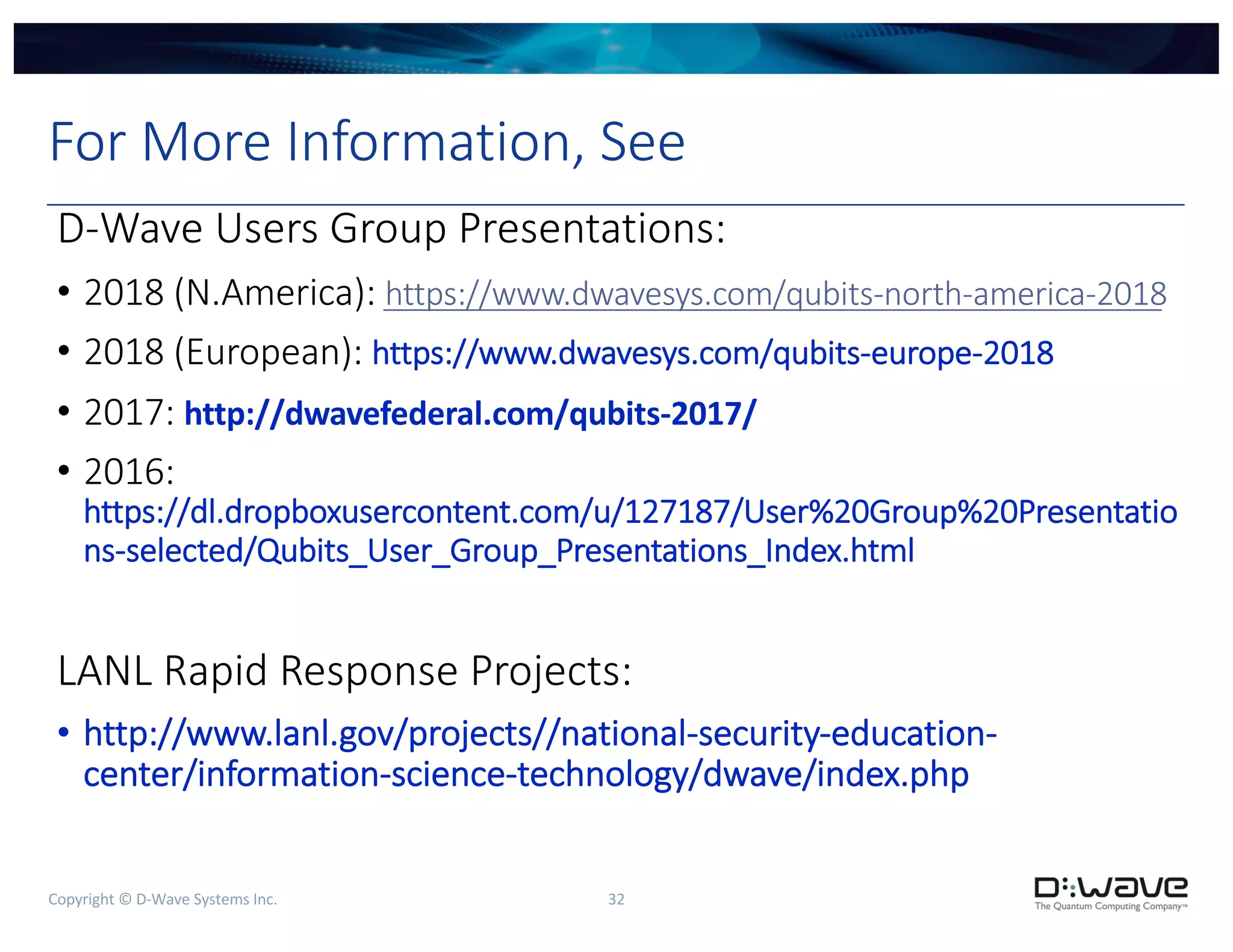The document discusses a compute-intensive graph kernel for detecting lateral movement in netflow data using D-Wave quantum systems, focusing on the maximum independent set as an indicator of such behavior. It outlines the optimization of graph kernels, performance challenges, and potential applications for cyber analysts. Future work includes verifying results on known lateral movement data and finding appropriate visualizations to aid analysis.

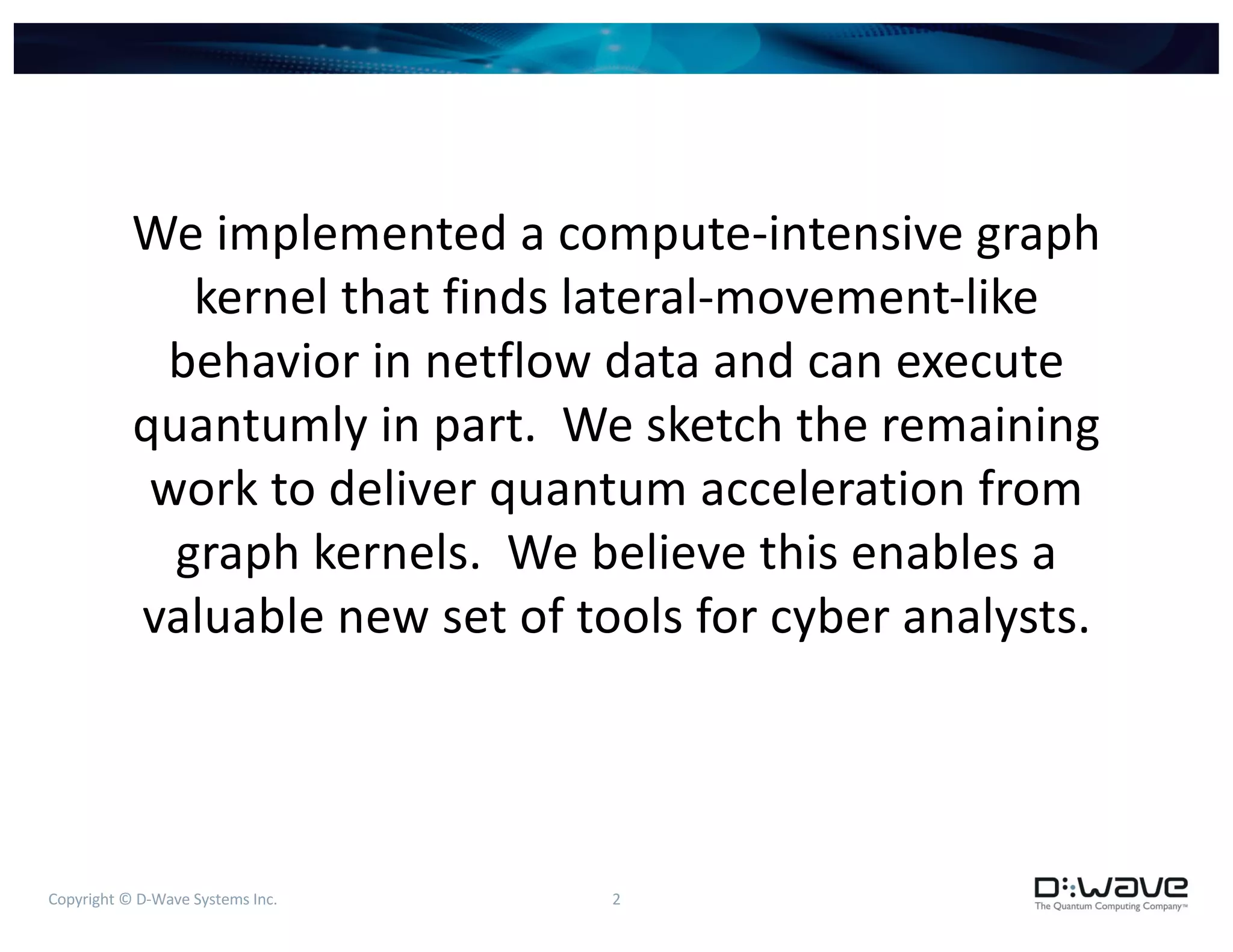


![Copyright © D-Wave Systems Inc. 5
Detecting Lateral Movement
• On graph of point-to-point logins
(ssh, RDP), calculate maximum
independent set (largest set of
non-adjacent vertices)
• As point-to-point logins explore
more of the enterprise network,
MIS shrinks
• [WIP] Confirmed on traffic not known to contain lateral
movement; working to confirm on traffic with lateral movement
https://blog.rapid7.com/content/images/post-images/53326/the-attack-chain.png](https://image.slidesharecdn.com/detectinglmwcomputeintensegkernelclsac18oct30-181031013609/75/Detecting-Lateral-Movement-with-a-Compute-Intense-Graph-Kernel-5-2048.jpg)
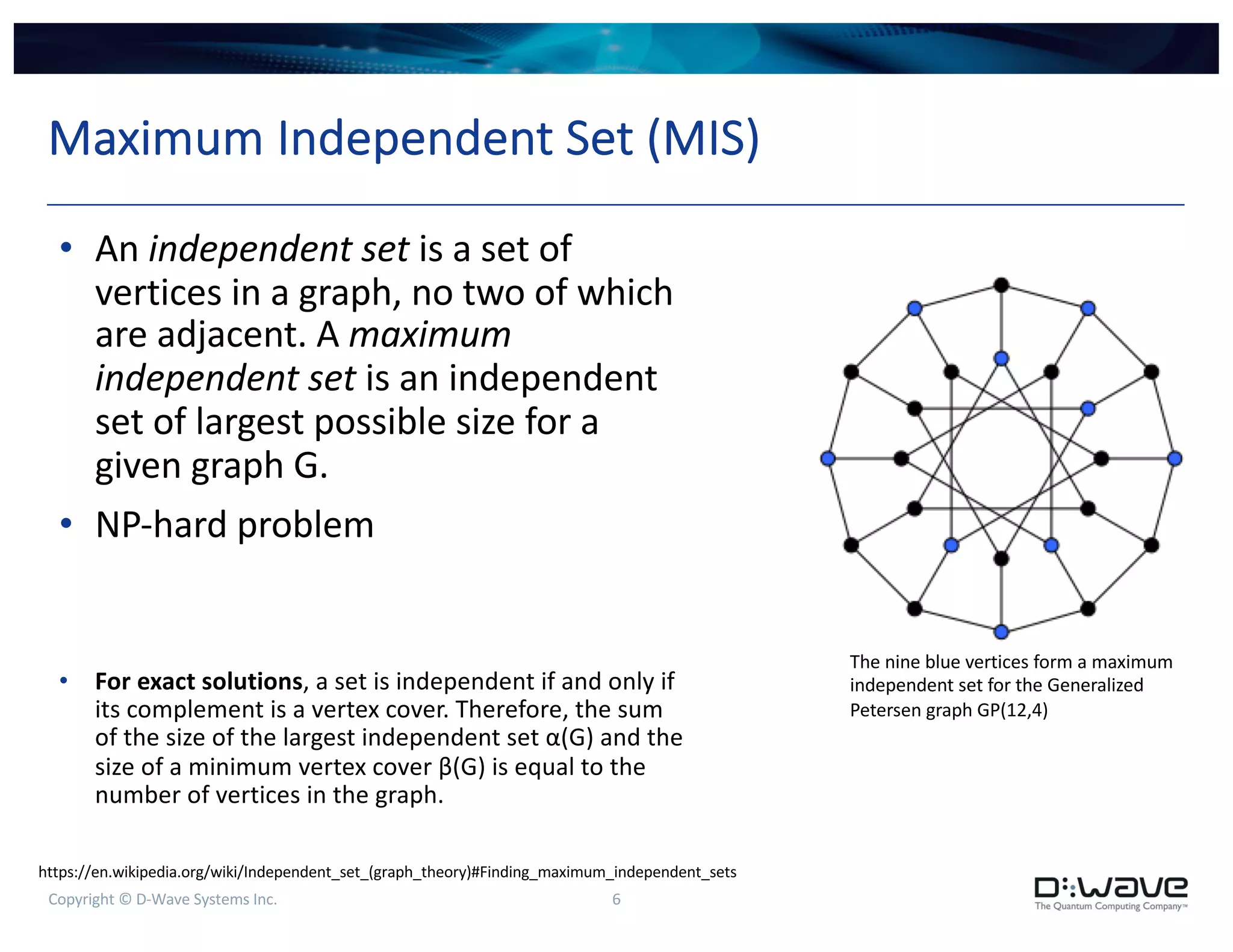
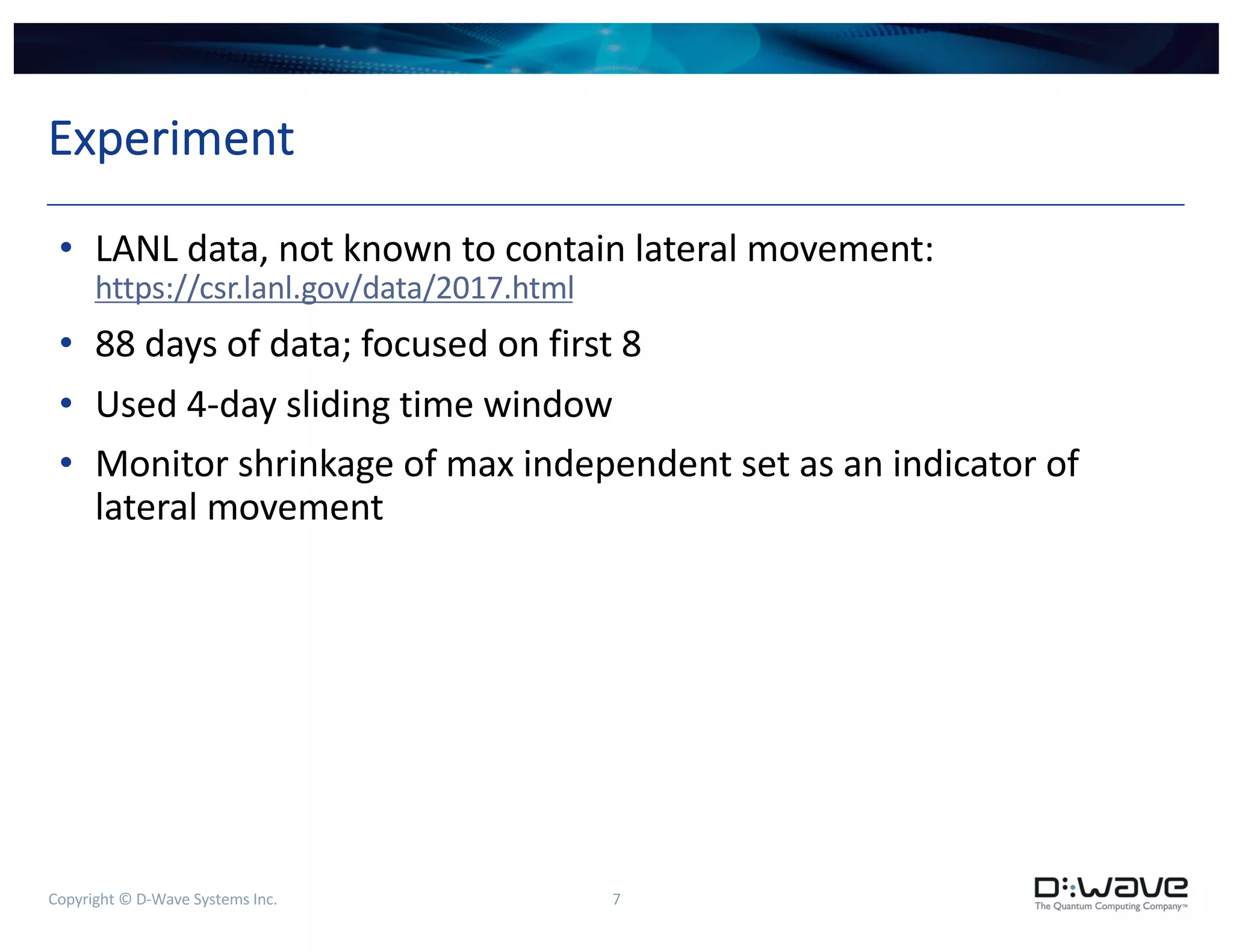
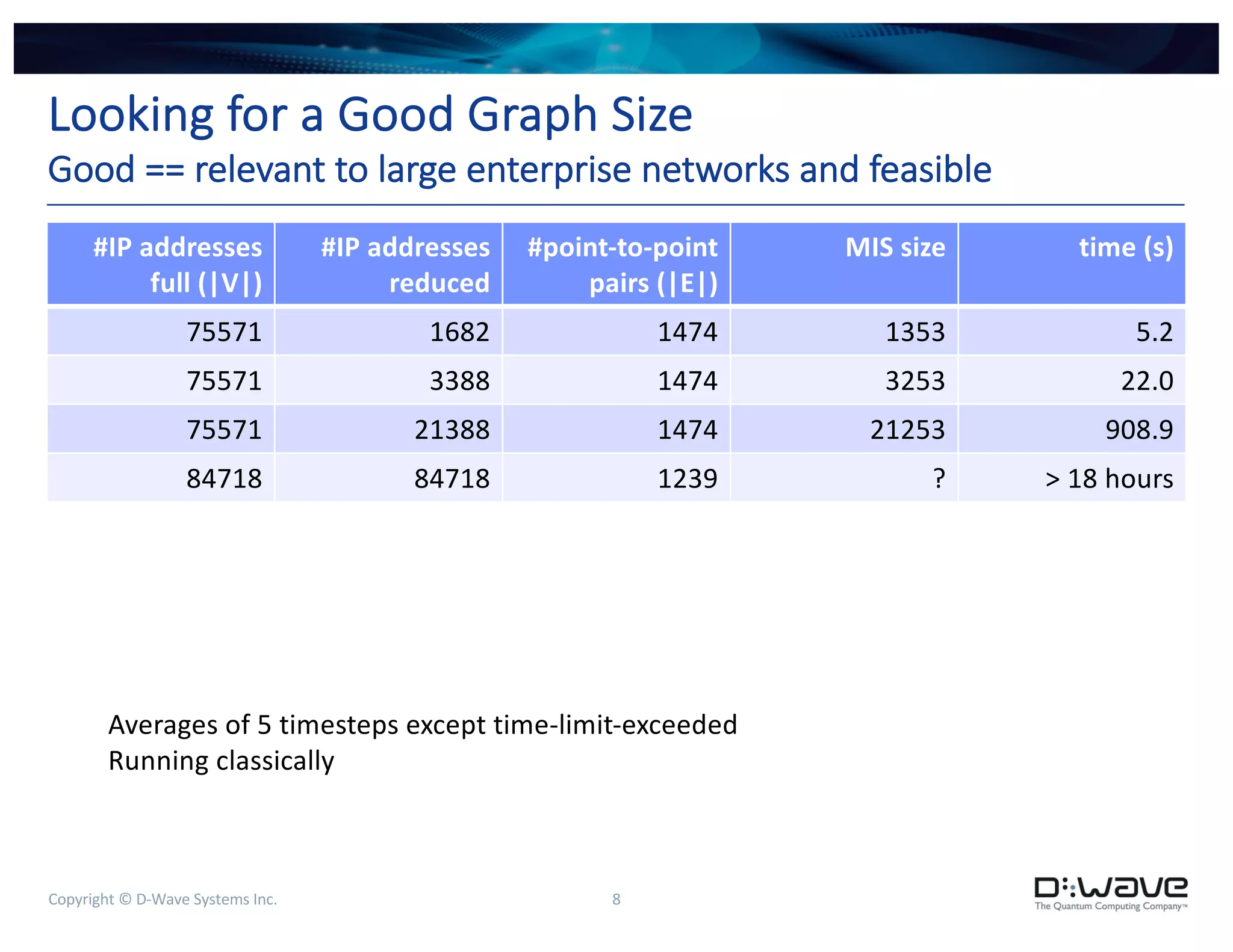
![Copyright © D-Wave Systems Inc. 9
Analytic Finds Smaller MIS Size
spr_mbp:10M $ /Users/sreinhardt/technical/app_code/cyberGraph/process3.py netflow netflow --nTimesteps 8 --nTimestepsPerDay 4 -
-inputFormat LANL --inputDigested --verbose --reduceGraph
Namespace(allInput='netflow', inputDigested=True, inputFormat='LANL', nRecordsPerTimeperiod=None, nTimesteps=8,
nTimestepsPerDay=4, nTimestepsPerWindow=None, pt2ptInput='netflow', reduceGraph=True, verbose=1)
Reducing graph? True
for timestep 3, the number of IP addresses in the full graph is 84718 and the number of IP-address-pairs that had point-to-point logins is
1239; the number of IP addresses in the reduced graph is 21178 and IP-address-pairs pt2tp is 1239
first MIS took 0:11:25.255169, second MIS took 0:17:05.962103
MIS size decreased from 21178 to 21059 (119) when ssh/telnet/RDP log-ins considered
IP addresses that are no longer part of the maximum independent set are ['ActiveDirectory', 'Comp005825’, […]
for timestep 4, the number of IP addresses in the full graph is 82543 and the number of IP-address-pairs that had point-to-point logins is
1472; the number of IP addresses in the reduced graph is 21380 and IP-address-pairs pt2tp is 1472
first MIS took 0:13:12.690244, second MIS took 0:14:24.761931
MIS size decreased from 21380 to 21245 (135) when ssh/telnet/RDP log-ins considered
IP addresses that are no longer part of the maximum independent set are ['ActiveDirectory', 'Comp005825’, […]
for timestep 5, the number of IP addresses in the full graph is 82266 and the number of IP-address-pairs that had point-to-point logins is
1525; the number of IP addresses in the reduced graph is 21427 and IP-address-pairs pt2tp is 1525
first MIS took 0:11:10.267566, second MIS took 0:11:31.594414
MIS size decreased from 21427 to 21294 (133) when ssh/telnet/RDP log-ins considered
IP addresses that are no longer part of the maximum independent set are ['ActiveDirectory', 'Comp005295’, […]
for timestep 6, the number of IP addresses in the full graph is 66069 and the number of IP-address-pairs that had point-to-point logins is
1551; the number of IP addresses in the reduced graph is 21459 and IP-address-pairs pt2tp is 1551
first MIS took 0:11:06.538207, second MIS took 0:17:56.528730
MIS size decreased from 21459 to 21317 (142) when ssh/telnet/RDP log-ins considered
IP addresses that are no longer part of the maximum independent set are ['ActiveDirectory', 'Comp005295’, […]](https://image.slidesharecdn.com/detectinglmwcomputeintensegkernelclsac18oct30-181031013609/75/Detecting-Lateral-Movement-with-a-Compute-Intense-Graph-Kernel-9-2048.jpg)

